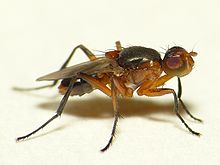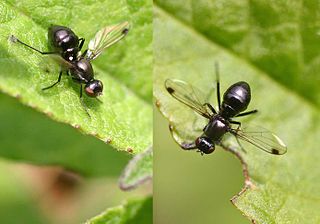
The Sepsidae are a family of flies, commonly called the black scavenger flies or ensign flies. Over 300 species are described worldwide. They are usually found around dung or decaying plant and animal material. Many species resemble ants, having a "waist" and glossy black body. Many Sepsidae have a curious wing-waving habit made more apparent by dark patches at the wing end.

Cluster flies are flies of the genus Pollenia in the family Polleniidae. Unlike the more familiar blow flies, such as the bluebottle genus Phormia they do not lay eggs in human food. They parasitise earthworms; the females lay their eggs near earthworm burrows, and the larvae then feed on the worms. But the biology of this group is relatively poorly known and a few have been recorded from other hosts including caterpillars and bees.

Fannia is a very large genus of approximately 288 species of flies. The genus was originally described by the French entomologist Jean-Baptiste Robineau-Desvoidy in 1830. A number of species were formerly placed in the genus Musca.
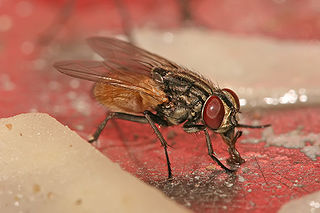
Muscini is a Tribe of flies from the family Muscidae.

Lydella is a genus of flies in the family Tachinidae. Lydella thompsoni can be used in the UK for the biological control of the European corn borer.

Exoristinae is a subfamily of flies in the family Tachinidae. Most species are parasitoids of caterpillars.

Eryciini is a tribe of flies in the family Tachinidae

Goniini is a tribe of parasitic flies in the family Tachinidae. Members of Goniini are distinguished from other Tachinidae by laying small "microtype" eggs that hatch only after being ingested by a host.

Sepsis is a genus of flies in the family Sepsidae.

Sepsis violacea is a European species of flies and member of the family Sepsidae.

Themira annulipes is a European species of fly and member of the family Sepsidae.

Saltella sphondylii is a European species of flies and member of the family Sepsidae.
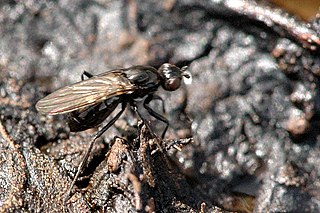
Themira is a genus of flies in the family Sepsidae.

Ernestiini is a tribe of flies in the family Tachinidae.

Tachininae is a subfamily of flies in the family Tachinidae.

Leskiini is a tribe of flies in the family Tachinidae.

Nemoraeini is a tribe of flies in the family Tachinidae.

Siphonini is a tribe of flies in the family Tachinidae.
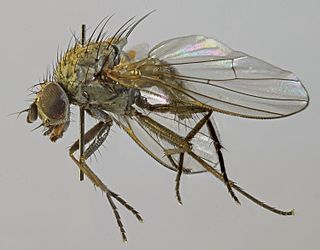
Azelia is a genus of flies belonging to the family Muscidae.
